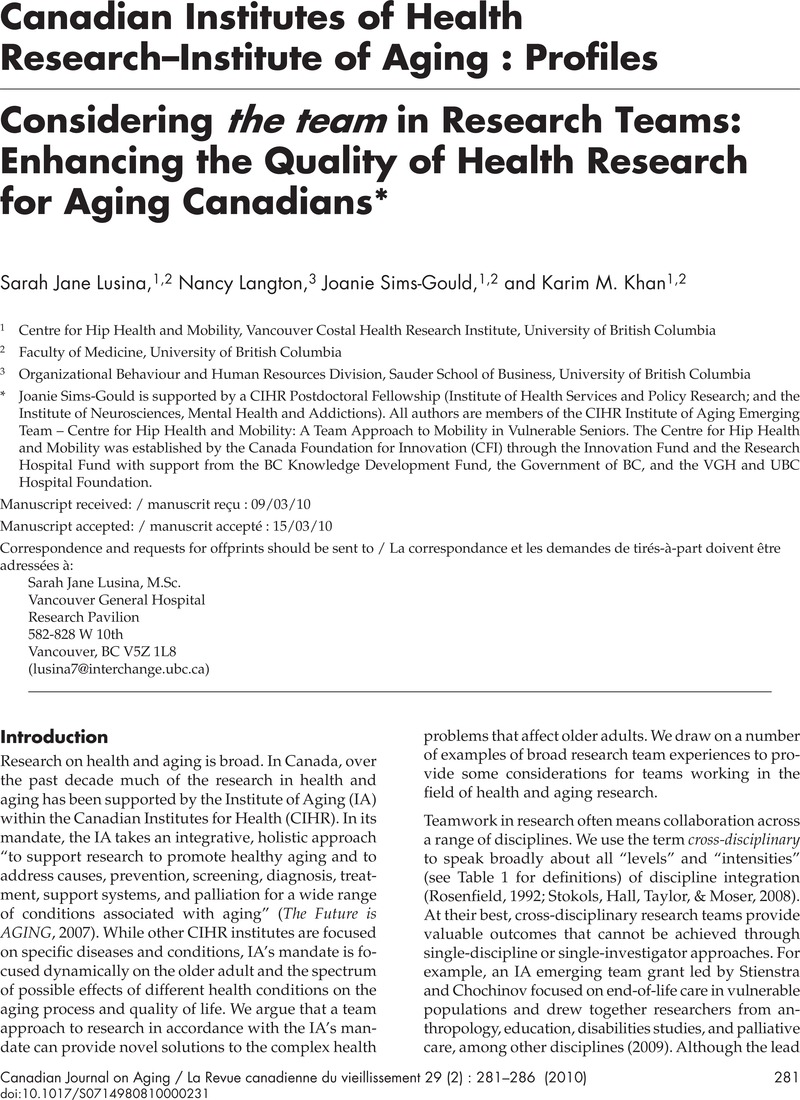No CrossRef data available.
Published online by Cambridge University Press: 07 May 2010

Joanie Sims-Gould is supported by a CIHR Postdoctoral Fellowship (Institute of Health Services and Policy Research; and the Institute of Neurosciences, Mental Health and Addictions). All authors are members of the CIHR Institute of Aging Emerging Team – Centre for Hip Health and Mobility: A Team Approach to Mobility in Vulnerable Seniors. The Centre for Hip Health and Mobility was established by the Canada Foundation for Innovation (CFI) through the Innovation Fund and the Research Hospital Fund with support from the BC Knowledge Development Fund, the Government of BC, and the VGH and UBC Hospital Foundation.